La preistoria.
La storia del Garda ha inizio con le prime genti che popolarono l'Italia; sulla sponda di questo lago, infatti, si trovano caverne primitive e cospicui resti di palafitte sia sotto la Rocca di Garda, come a Lazise, a Pacengo e a Peschiera. I tempi preistorici restano ancora avvolti nell'incertezza; tuttavia, pare che i primi abitatori fossero gli Aborigeni, ma sicuramente vi fu l’insediamento degli Umbri che provenivano dall’Europa centrale. Vero il 1000 a.C., si stanziarono sul lago gli Etruschi che poi si divisero in due ceppi: i Rezi e i Toschi che occupavano le zone a nord e ad ovest del lago. Sulla sponda orientale erano invece stanziati i Veneti. Nel 154 dalla fondazione di Roma, gli Etruschi furono sopraffatti dai Galli Cenomani.
The preistoria.
The history of the Garda has beginning with the first people that popolarono Italy; on the side of this lago, in fact, primitive caverns are found and cospicui rests of stilt houses are under the Rocca di Garda, like to Lazise, Pacengo and Fish farm. The preistorici times still remain wrapped in the uncertainty; however, it seems that the first abitatori were the Aboriginals, but sure was the takeover of the Umbri that came from Europe center them. True the 1000 a.C., they allocated on the lago the Etruschi that then was divided in two stocks: the Rezi and the Toschi that occupied the zones to north and the west of the lago. On the side it orients them were instead allocates the Veneti to you. In the 154 from the foundation of Rome, the Etruschi was overwhelmed from the Cenomani Galliums.
Il periodo romano.
Nel 225 a.C. gli eserciti romani passarono il Po, sconfissero i Galli Insubri, soggiogarono il territorio e vi fondarono le loro prime colonie. Di questo periodo non si hanno notizie sicure. Le prime notizie appartengono al 15 a.C., anno in cui Augusto diede mandato ai suoi luogotenenti di sottomettere i Reti trentini che si erano ribellati. In quell'anno i Romani con navi da trasporto attraversarono il lago. Con il nuovo assetto politico-amministrativo, Brescia, la Val Trompia, la Val Sabbia e la Riviera fino ad Arco, furono assegnate alla tribù Fabia; Verona fu assegnata alla tribù Poblilia. Con il dominio di Roma ebbe nuovo impulso anche la vita economica e sociale: i Romani, infatti, costruirono le strade: principali fra tutte la Gallica e la Claudia Augusta. Da queste arterie maggiori si dipartivano altre vie, forse secondarie, ma in ogni modo tali da consentire traffici e trasporti. Importanti furono le vie di comunicazione fluviali sul Po e sul Mincio, e quella lacuale interna. Si ritiene che, nel periodo romano, i punti principali di vita sul Garda siano stati per la sponda orientale Torri e per quella occidentale Toscolano. Cospicuo è il patrimonio della civiltà romana affiorato negli ultimi scavi, presente in lapidi o in monete specialmente nei paesi di Peschiera, Lazise, Garda, Torri e Malcesine. Alla fine del sec. IV le genti del lago, specie per opera di S. Vigilio, Vescovo di Trento, furono convertite al cattolicesimo.
The roman period.
In the 225 a.C armies roman they passed the Po, they defeated the Insubri Galliums, soggiogarono the territory and first colonies founded you theirs. Of this period sure news is not had. The first news belongs to the 15 a.C., year in which Augusto it gave sent to its luogotenenti to submit the Nets some thirties that were rebel to you. In that year the Roman with transport ships crossed the lago. With the new political-administrative order, Brescia, the Val Trompia, the Val Sabbia and the Coast until Arc, was assigned to the Fabia tribe; Verona was assigned to the Poblilia tribe. With the dominion of Rome the economic life and social had new impulse also: the Roman, in fact, constructed the roads: main between all Gaulish and the Claudia Augusta. From these arteries greater dipartivano other ways, secondary, but perhaps in any case such to concur traffics and transports. Important were the fluvial ways of communication on the Po and the Mincio, and that lacuale inner one. It is thought that, in the roman period, the main points of life on the Garda have been for the side orient them Towers and for that western Toscolano. Cospicuo is the patrimony of the emerged roman civilization in the last diggings, present in stones to death or coins especially in the countries of Fish farm, Lazise, Garda, Torri and Malcesine. To the end of sec. the IV people of the lago, species for work of S. Vigilio, Bishop of Trento, were converted the Catholicism.
Le invasioni.
Col decadere dell'impero romano, anche il territorio lacuale subì le vicissitudini delle invasioni e delle guerre. Prima Odoacre e poi Teodorico fecero sentire la loro sovranità ed agli Ostrogoti si opposero i Bizantini, guidati da Belisario e poi da Narsete. Nel 568 i Longobardi guidati dal re Alboino s'impossessarono di gran parte del territorio italiano che fu diviso in 36 ducati e, tra questi quello che comprendeva le città e i territori di Verona, Brescia e Trento. Nel 774, con la disfatta di Desiderio, ultimo re dei Longobardi, sottentrò il dominio di Carlo Magno, re dei Franchi, che divise il territorio veronese in distretti giudiziari retti da un giudice o gastaldione. A Verona poneva la sua reggia Pipino, il primogenito dell'imperatore, che visitò il Lago spingendosi sino a Malcesine. Con la nuova suddivisione data da Carlo Magno, Garda fu staccata da Verona e fu eretta a contea. Dopo la morte del glorioso imperatore, venuto meno il potere centrale, tra i Veronesi e gli abitanti del lago sorsero discordie e fu combattuta - pare - anche una dura battaglia (tra l'829 e l'856), nella quale i veronesi, col consiglio del capitano veneziano Maffeo Giustiniani, dopo aver allestito una flotta, ridussero all'obbedienza le genti gardesane.
The invasions.
With decaying of the roman empire, also the lacuale territory endured the vicissitudini of the invasions and the wars. First Odoacre and then Teodorico made to feel their sovereignty and to the Ostrogoti they opposed the Bizantini, guides to you from Belisario and from Narsete then. In the 568 the Longobardi guides to you from the king Alboino s'impossessarono of great part of the Italian territory that was divided in 36 ducati and, between the one which comprised the cities and the territories of Verona, Brescia and Trento. In the 774, with the unravelled one of Desire, last king of the Longobardi, sottentrò the dominion of Carl Magno, king of the Franchi, than uniforms the veronese territory in judicial districts resisted from a judge or gastaldione. To Verona Pipino, the primogenito one of the emperor placed its reggia, that it visited the Lago pushing itself until to Malcesine. With the new subdivision given from Carl Magno, Garda was detached from Verona and was erected to county. After the dead women of the glorious emperor, come less the power centers them, between the Veronesi and the inhabitants of the lago rose discords and were fought - it seems - also a hard battle (between l'829 and l'856), in which the veronesi, with the council of veneziano captain Maffeo Giustiniani, after to have prepared a fleet, reduced to obedience gardesane people.
Il periodo feudale e comunale.
Col cessare della dinastia carolingia l'Italia, ed anche le varie contee, cercarono di riconquistare l'indipendenza ed elessero proprio re Berengario, duca del Friuli che pose la sede in Verona. In questo periodo, avvenne la terribile invasione degli Ungari, onde la necessità di innalzare fortificazioni nuove e di rinforzare le preesistenti. Dopo Berengario la corona d'Italia passò ad Ugo di Provenza e poi al di lui figlio Lotario che, nel 947, sposerà Adelaide di Borgogna. Lotario fu avvelenato dal proprio tutore, Berengario duca d’Ivrea, il quale inoltre imprigionò Adelaide nella rocca di Garda perché aveva rifiutato di sposare Alberto, figlio ed erede di Berengario stesso. Con la discesa di Ottone (953) il regno italico finiva, e la Rocca di Garda veniva smantellata (963). Come l'autorità imperiale a mano a mano si andò indebolendo a causa dell’assenteismo degli imperatori, si sostituì ad essa quella dei feudatari e l'ordinamento del libero comune. Nel secolo XII le terre della sponda veronese mutarono spesso padrone e nel 1160 erano sotto la giurisdizione del veronese Turrisendo dei Turrisendi che si oppose al Barbarossa. Le libertà - che a poco a poco i comuni del lago si erano conquistate - furono però confermate nella pace di Costanza (1133) e continuarono sino all'estendersi della Signoria Scaligera (1277-1329). In questo periodo, si costituì sulla sponda occidentale la “Magnifica Patria”, (comunità che comprendeva 33 terre): scopo della comunità – che ebbe per capoluogo prima Maderno e poi Salò – era la difesa della propria autonomia contro i Visconti e gli Scaligeri. Parallelamente, sulla sponda orientale, 18 comuni federati costituirono la “Gardesana”, ma Ezzelino da Romano e gli Scaligeri contrastarono ogni tendenza autonomista. Il dominio scaligero fu comunque benefico e durò sino al 1387, quando i Visconti, alleati con i Gonzaga ed i Carrara, sconfissero i della Scala, e si impossessarono del territorio veronese del lago. La “Gardesana” era retta da un Capitano o Prefetto che risiedeva in Malcesine. Il Capitano durava in carica prima per cinque anni e poi per tre, ed era assistito da un Consiglio, che si riuniva a Torri. Al Capitano spettava il compito d’impedire il contrabbando e di vigilare sulla sicurezza militare e politica. Il Sommolago seguiva strade diverse: feudo di alcuni grandi monasteri bresciani, appartenne al "comitatus" di Trento e alla Marca di Verona; fu poi affidato al duca di Baviera e a quello di Corinzia. Il 1004 segnò l'inizio del principato vescovile di Trento. Riuscì a conservare la propria indipendenza contro i conti di Tirolo e gli Asburgo fino alla sua annessione all'Austria nel 1803.
The feudale and communal period.
With stopping of the dynasty carolingia Italy, and also the several counties, tried to reconquer independence and elessero just king Berengario, duca of the Friuli that placed the center in Verona. In this period, it happened the terrible invasion of the Ungari, waves the necessity to raise new fortifications and to reinforce preesistenti. After Berengario the crown of Italy passed then to Ugo di Provenza and to of he the Lotario son whom, in the 947, Adelaide di Borgogna will marry. Lotario was poisoned from just the tutor, Berengario duca of Ivrea, which moreover imprisoned Adelaide in the rocca of Garda because it had refused to marry Alberto, son and heir of same Berengario. With the Brass reduction (953) the italico reign ended, and the Rocca di Garda came dismantled (963). As the imperial authority by hand by hand was gone weakening because of the absenteeism of the emperors, that one of the feudatari and the free ordering of the common one was replaced to it. In century XII the lands of the veronese side often changed landladies and in the 1160 they were under the jurisdiction of the veronese Turrisendo of the Turrisendi that was opposed to the Barbarossa. The freedoms - than little little the common ones of the lago they had been conquered - but were confirmed in the peace of Costanza (1133) and continued until to extending of the Lordship Scaligera (1277-1329). In this period, the “Magnificent Native land” was delivered up on the western side, (community that comprised 33 lands): scope of the community - that it had then for capoluogo first Maderno and Salò - was the defense of the own autonomy against the Visconti and the Scaligeri. Parallel, on the side it orients them, 18 common ones federati constituted the “Gardesana”, but Ezzelino from Roman and the Scaligeri contrasted every tendency autonomist. The scaligero dominion was however beneficial and lasted until to 1387, when the Visconti, allies with the Gonzaga and the Carrara to you, they defeated of the Scale, and impossessarono of the veronese territory of the lago. The “Gardesana” was straight from Capitano or Prefetto who resided in Malcesine. The Captain lasted in loads before for five years and then for three, and was assisted from a Council, than he gathered to Towers. To the Captain the task was up to prevent the contraband and to supervise on the military and political emergency. The Sommolago followed various roads: feudo of some great bresciani monasteri, it belonged to “comitatus” of Trento and to Marca of Verona; then it was entrusted to the duca of Baviera and that one of Corinzia. 1004 marked the beginning of the episcopal principato one of Trento. It succeeded to conserve own independence against the accounts of Tirolo and the Asburgo until its annexation in Austria in 1803.
Il periodo veneziano.
Il dominio visconteo durò diciassette anni e – dopo la breve parentesi dei Carraresi – nell’anno 1405 ebbe inizio il dominio veneziano, che durò ininterrotto quasi per quattro secoli (1405-1797). Fu il periodo aureo della storia del lago: con la saggezza politica e l’abilità amministrativa di Venezia, lo sviluppo edilizio e la vita economico-sociale ricevettero un forte impulso: molti torrenti furono arginati, molte terre bonificate; fu introdotta la vite, l’olivo e gli alberi da frutta; nuove fonderie e officine per la lavorazione del ferro sorsero a Gardone e a Toscolano; nel veronese fiorì l’industria della lana, a Toscolano quella della carta; nella Riviera si lavorava il refe per farne cordami, tele di lino, la canapa, le pelli. In tutta la zona ebbe inizio la bachicoltura e la produzione di seta.
The veneziano period.
The visconteo dominion lasted seventeen years and - after the short parenthesis of the Carraresi - in year 1405 it had beginning the veneziano dominion, that it lasted uninterrupted nearly for four centuries (1405-1797). It was the gold period of the history of the lago: with the political wisdom and the administrative ability of Venice, the building development and the economic-social life will receive a strong impulse: many torrents were check to you, many cleared lands; it was introduced the screw, the olive tree and the trees from fruit; new foundries and workshops for the working of the iron rose to Gardone and Toscolano; in the veronese the industry of the wool bloomed, to Toscolano that one of the paper; in the Coast the refe was worked in order to make some cordami, linen burlaps, the hemp, the skins. In all the zone had beginning the silk silkworm breeding and production.
L’Ottocento.
Il dominio di Venezia venne a cessare quando le terre del lago furono occupate dalle truppe napoleoniche (1796) cui subentrarono le austriache. Dopo il «Trattato di Luneville» (1801) la «Gardesana dell'Acqua» fu incorporata nella Repubblica Cisalpina e poi nella Repubblica Italiana (1802). Alterne vicende seguirono sino al «Trattato di Parigi» (1814) col quale ebbe origine il Regno Lombardo-Veneto sotto il dominio dell’Austria. La provincia di Verona fu ripartita in 12 distretti fra i quali quello di «Caprino» che comprendeva anche i paesi della sponda: pochi anni dopo - per ragioni amministrative - ai preesistenti si aggiunse il distretto di Bardolino che accentrò la vita di tutti i comuni del lago. Verona e la sponda orientale del Garda sono percorse dal fremito di conquistare l'indipendenza e di ricongiungersi all'Italia: nel 1848 pare che l'ardente speranza diventi realtà, quando Carlo Alberto entra in Peschiera, ma l'entusiasmo dei patrioti e delle popolazioni potrà essere appagato solo nel 1866.
The 1800's.
The dominion of Venice came to stop when the lands of the lago were occupied from napoleoniche troops (1796) which the Austrians subentrarono. After the “Treaty of Luneville” (1801) the “Gardesana of the Water” it was incorporated in the Cisalpina Republic and then in Italian Republic (1802). Alternate vicissitudes followed until to the “Treaty of Paris” (1814) with which the Lombardic-Veneto Reign had origin under the dominion of Austria. The province of Verona was shared in 12 districts between which that one of “Goat” that it comprised also the countries of the side: little year after - for reason administrative - to the preesistenti add the district of Bardolino that centralize the life of all the common of the lago. Verona and the side orients them of the Garda is covered from the fremito one to conquer independence and to rejoin itself with Italy: in 1848 it seems that the burning hope becomes truth, when Carl Alberto enters in Fish farm, but the enthusiasm of the patriots and the populations could be satisfied single in 1866.
venerdì 20 aprile 2007
Iscriviti a:
Commenti sul post (Atom)
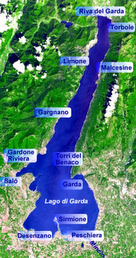

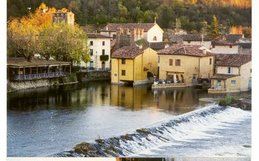
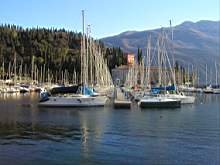
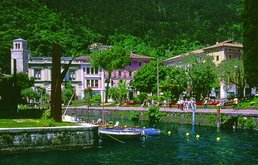
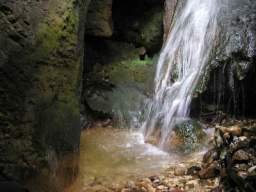

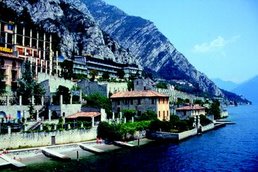
Nessun commento:
Posta un commento